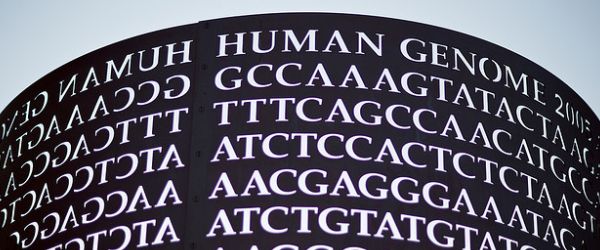Ion Torrent technology, when it was introduced in 2010, was one of several machines that promised to revolutionize genetics. These were benchtop machines that showed their prowess in quickly sequencing smaller exomes and other DNA samples (about 10-20 million bases per run, compared to Illumina HiSeq, which could read 250 billion bases in a run).
How does the Ion Torrent sequencer work?
Ion Torrent sequencing is based on a unique technology. Instead of optically reading dye-labeled nucleotides, Ion Torrent detects electrical signals on a semiconductor chip.
For the Ion Torrent PGM and Proton machines, library construction is like other sequencing processes, including DNA fragmentation, end polishing with enzymes, and ligation of adapters. After that, things get a little different.
Amplifying DNA fragments is done by emulsion PCR, which counts and dilutes the library fragments. The fragments are mixed with small beads, PCR reagents and DNA polymerases. Adaptor complementary sequences on the bead’s surface aid in amplification on the bead. This emulsion is inserted into an oil vessel, and goes through thermal cycling. Once these amplification steps are over, the emulsion and beads are separated from the oil, and enriched beads are placed into the Ion Chip.
Enjoying this article? Get hard-won lab wisdom like this delivered to your inbox 3x a week.

Join over 65,000 fellow researchers saving time, reducing stress, and seeing their experiments succeed. Unsubscribe anytime.
Next issue goes out tomorrow; don’t miss it.
Ion Torrent combines computer software with integrated circuits and complementary metal-oxide semiconductors (CMOS) used in digital cameras, laptop computers, and mobile phones. The technology also adopts an electrochemical detection system called ion-sensitive field-effect transistors (ISFET). The ISFETs detect hydrogen ions as the DNA polymerase releases them during sequencing by DNA synthesis. All these electronics are focused on detecting and analyzing the release of the hydrogen ion (or proton) that occurs each time a nucleotide triphosphate is added. The proton release causes a slight pH shift and is detected by a CMOS sensor.
Each chip has at least 1.2 million sensors that are composed of a well that contains the dNTP and an acrylamide bead containing a DNA template. Just beneath the well lies the metal oxide sensing layer, which itself lies over a sensor plate and floating metal “gate” that transmits electronic information (the pH changes) to the semiconductor.
How do you use the Ion Torrent sequencer?
To use the Ion Torrent sequencer, prepare genomic DNA like you would for any other sequencer. DNA polymerase and primers are bound to templates and pipetted into the loading port. Beads are inserted into the individual sensor wells by spinning the chip in a centrifuge.
During sequencing, the four bases (A, T, G, C) are introduced one at a time during a run. A nucleotide complementary to the base on the template is incorporated into the growing genome strand by DNA polymerase. Then, signal processing software measures incorporation and filters out low-accuracy readings.
Errors from the Ion Torrent method arise from noise due to the fact that not all fragments are extended by nucleotide addition. These errors are particularly noticeable in homopolymers (multiple, identical bases). The error rate of Ion Torrent machines is about 1 percent per read (1 in 100 bases), about twice that of Illumina’s machines.
Ion Torrent was a startup company in Connecticut, founded by Jonathan Rothberg, the inventor of the Roche 454 sequencer. After it began developing its chip-based sequencing technology in the early 2000s and commercialized it in 2010, it was soon acquired by Life Technologies, which, in turn, was bought by ThermoFisher Corp (Rothberg left the company in 2013).
For further reading:
Mardis, E.R. (2013). Next-generation sequencing platforms. Annu Rev Anal Chem (Palo Alto Calif), 6, 287 –303. https://dx.doi.org/10.1146/annurev-anchem-062012-092628
Robison, K. (2015). Omics! Omics! Blog. https://omicsomics.blogspot.com/2015/02/can-ion-torrent-buzz-again.html
Rothberg, J.M., et al. (2011). An integrated semiconductor device enabling non-optical genome sequencing. Nature, 475, 348–352. https://dx.doi.org/10.1038/nature10242
Salipante S.J., et al. (2014). Performance Comparison of Illumina and Ion Torrent Next-Generation Sequencing Platforms for 16S rRNA-Based Bacterial Community Profiling. Appl Environ Microbiol. 80, 7583–7591. https://dx.doi.org/10.1128/AEM.02206-14






